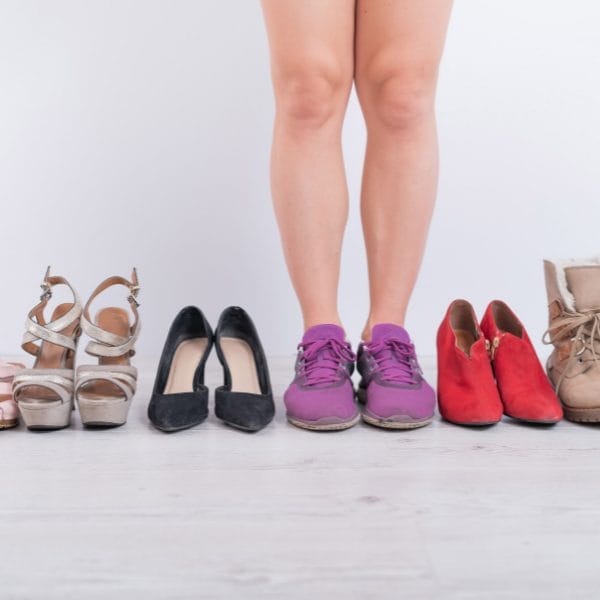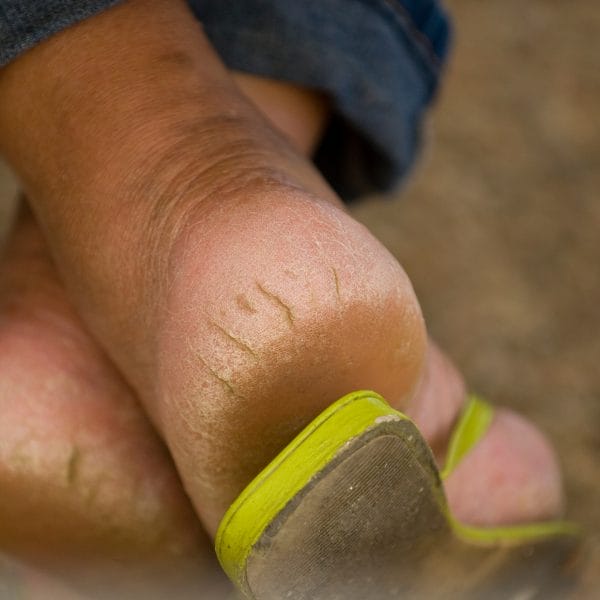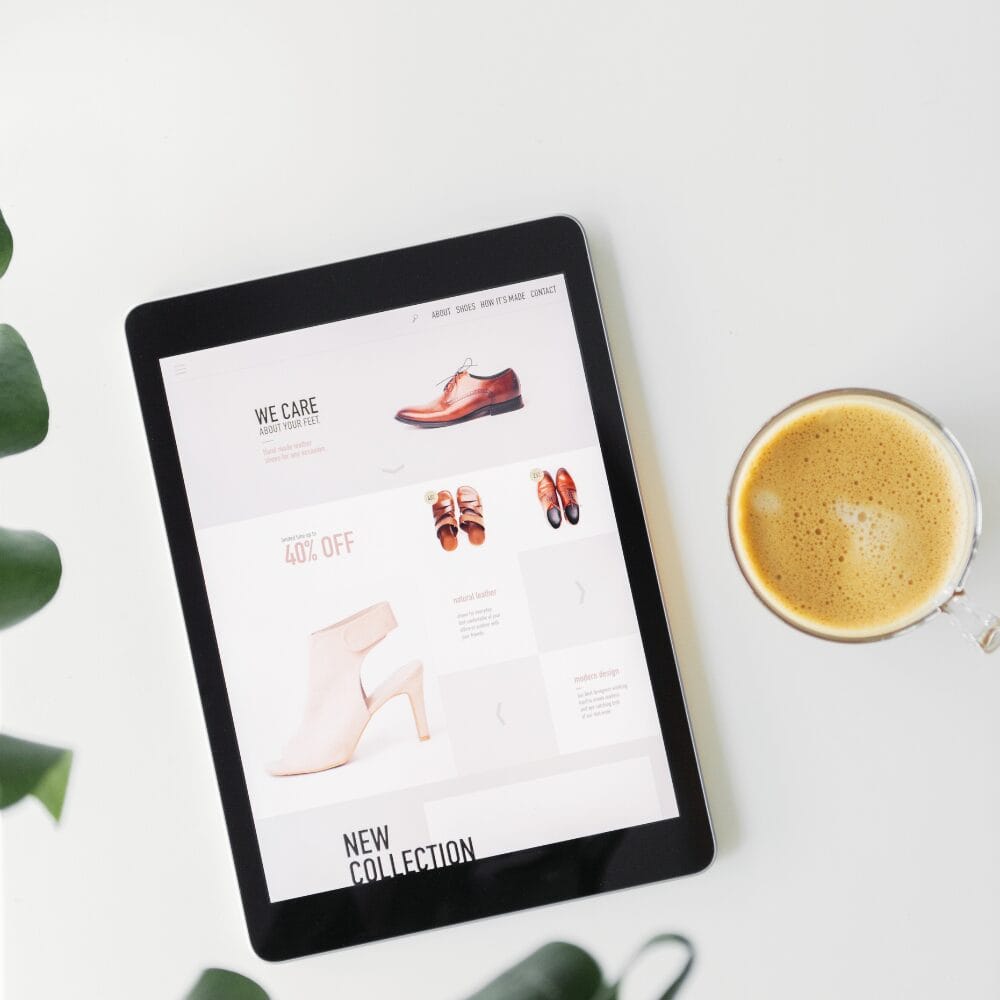What to look for when buying shoes
- Updated - August 21, 2024
Does Your Posture Need Some Help?
Perhaps it’s time to consider buying shoes that better support your needs! You might not think that your choice of footwear is significant, but buying shoes that fit well and provide proper support is one of the most important decisions you will ever make.
Your feet are your “landing gear.” They take the brunt of all your walking, running, jumping, and standing. We all know that good posture is essential for good health, and poor footwear is a common cause of posture issues.
Why Proper Footwear is Essential for Posture

If you’re not careful, wearing uncomfortable shoes can lead to foot pain and other injuries! Therefore, there are several things you should consider before buying a pair of shoes that will help you make an informed decision about what type of shoe will suit you best. Trying on different styles is crucial to ensure a proper fit, as the fit can vary among various styles even if the size is the same.
What to Look Out for When Trying on Shoes
Key Issues to Watch For
If you will be wearing them long-term, you should look for shoes that offer support in the areas where posture is most likely to change due to shoe pressure. Shopping in physical stores allows you to try on shoes and assess their fit and comfort firsthand, providing a more intuitive shopping experience.
Take note of any changes or issues that may arise after wearing new shoes for a short period. If you seek shoes for everyday use, you should look for shoes that offer support in the areas where posture is most likely to change due to shoe pressure.
Areas of Support to Consider

These include the tripod of the foot:
- Ball of the foot
- Frontal arch
- Heel
Try to find shoes with a wide toe box. Your posture can be affected by the position of your feet and how they rest in the shoe, so make sure there’s enough space for them to move around. You should be able to wiggle your toes comfortably! And don’t forget about arch support—if you’re flat-footed, choose shoes with adequate arch support, and if you have high arches, opt for less support.
Discover a practitioner near you.
Looking for a practitioner near you? Our extensive network of qualified professionals is here to help you.
Shoe Support Considerations
The Importance of Proper Foot Support
Support for your foot can come from many places, including rigid structures that cup the arch of your foot, providing a cradle-like shape underneath your feet’s arches. Ensuring your shoes fit properly by measuring foot size accurately is crucial for comfort and proper sizing.
In addition, springiness found in the heel of lower-density foam shoe soles may soften under pressure and return to their original form when relieved of weight.
How Footwear Affects Your Entire Body
It’s also important to pay attention to your footwear’s effect on the rest of your body. Changes can affect your posture and impact your feet, ankles, knees, and hips.
Your foot position can also be improved by wearing supportive sandals or orthotics that fit correctly and alleviate pressure on specific problem areas. Of course, it never hurts to investigate other means of adjusting your posture, such as those offered by posture-focused health professionals!
When to Buy a New Pair of Shoes

Identifying the Signs
Even if posture is not your biggest problem, buying a new pair of shoes ensures you have the best support possible for the health and wellness of your feet. When you buy shoes online, make sure to select trustworthy websites, understand fit and sizing challenges, and compare the convenience of online shopping with the personal experience of visiting a store.
Posture-Related Problems from Worn-Out Shoes
If you don’t replace your worn-out footwear, the problem could worsen over time. Finding the correct shoe size is crucial to avoid posture-related problems. Shoes with poor support can lead to issues like plantar fasciitis and other complications due to foot pain stemming from muscle tension or tendons associated with posture.
Notice the amount of loss at the heel of your shoes. Is it worn unevenly? Do you find yourself walking through a ‘groove’ formed by worn-out shoes?
Foot pain, knee pain, and other foot and posture-related issues can indicate that you should look into the state of your shoes.
How New Shoes Can Help
This is the perfect opportunity to look for supportive shoes to help you achieve the posture support you need with less stress on troublesome areas. Even if posture is not your biggest problem, buying a new pair of shoes ensures you have the best support possible for the health and wellness of your feet.
Further Considerations

Shopping Online vs. In-Store
When it comes to finding the perfect pair of shoes, online stores offer several advantages, including a wider variety and competitive prices. Online shopping for shoes presents challenges, such as sizing discrepancies and the inability to physically try shoes before purchasing.
Tips for Buying Shoes Online
Buying shoes online offers the convenience of shopping from the comfort of your home and access to a wider variety of styles and brands. However, it also comes with challenges, such as ensuring a proper fit without the ability to try them on. To make the best choice:
- Know Your Size: Measure your feet before purchasing, as shoe sizes can vary between brands. Refer to the size chart provided by the retailer.
- Read Reviews: Look for reviews that mention the shoes’ fit, comfort, and quality. Pay attention to comments on sizing—whether they run true to size, small, or large.
- Check the Return Policy: Ensure the retailer offers a hassle-free return or exchange policy, allowing you to return shoes that don’t fit properly.
- Consider Multiple Sizes: If you’re unsure about your size, order two pairs in different sizes and return the one that doesn’t fit as well.
- Trustworthy Retailers: Buy from reputable websites to avoid counterfeit products and ensure quality.
By following these tips, you can increase your chances of finding the perfect pair of shoes online.
What Posture-Supportive Shoes Should I Look For?
To help relieve any discomfort associated with poor support, you’ll want to find footwear made with stability in mind. This means choosing a shoe that offers support when standing or walking. The fit and comfort of athletic footwear are crucial, suggesting that buying in-store provides a better experience for those who need to try on various styles and sizes before making a purchase. Consider insoles to replace those that came with your shoes.
Stability and Orthotic Footwear
Shoes made with stability and posture control in mind are often considered “orthotic” footwear, but don’t let this scare you! Orthotics can be helpful even when not custom-ordered from a doctor’s office. Posture-supportive shoes are a great everyday alternative to custom orthotics because they’re comfortable, affordable, and work just as well!
What Else Should I Consider?
Your feet change over time, so measuring them every few years is necessary. Shopping at online shoe stores offers the convenience of browsing a wide variety of options from the comfort of your home. Still, it also presents challenges such as ensuring a proper fit without trying the shoes on in person.
What Are Stability Shoes?
Stability shoes are designed to help correct posture problems. When purchasing running shoes, it is crucial to prioritize fit and comfort to ensure optimal performance and prevent injuries. Stability shoes often have features like arch support and a rigid structure that helps keep your foot in the correct position. This can be helpful for conditions like plantar fasciitis and degenerative disc disease.
Shoes to Avoid
Be sure to avoid overly “cushioned” shoes, as they may not provide adequate stability or posture support. When selecting appropriate dress shoes, consider the occasion, fit, and comfort to ensure they meet your specific needs. A lack of control can lead to serious injury, like tendonitis, and other issues that may develop over time! They’re also not great for your feet, which is why it’s good to find supportive shoes.
Final Thoughts
Quite often, the issue at hand is not necessarily the area presenting symptomatically.
If you’re having trouble with your posture, it’s critical to think about the kind of shoes that can assist. When buying shoes online, consider tips and strategies such as selecting the proper size, finding trustworthy websites, and understanding the pros and cons of online versus in-store shopping. Not only will walking correctly be difficult as your posture deteriorates, but other health issues like arthritis and scoliosis may also develop.
When purchasing new shoes for posture-related problems or when pain relief is necessary, make sure they are made with stability in mind!
About the author
PLEASE NOTE
PostureGeek.com does not provide medical advice. This information is for educational purposes only and is not intended to be a substitute for professional medical attention. The information provided should not replace the advice and expertise of an accredited health care provider. Any inquiry into your care and any potential impact on your health and wellbeing should be directed to your health care provider. All information is for educational purposes only and is not intended to be a substitute for professional medical care or treatment.
FURTHER CONSIDERATIONS
Find Expert Posture Practitioner Near You
Discover our Posture Focused Practitioner Directory, tailored to connect you with local experts committed to Improving Balance, Reducing Pain, and Enhancing Mobility.
